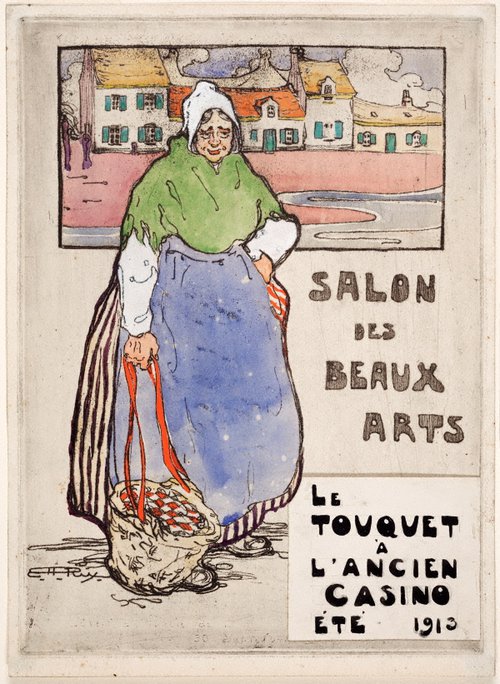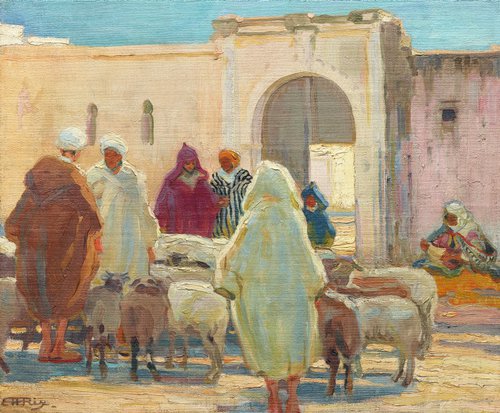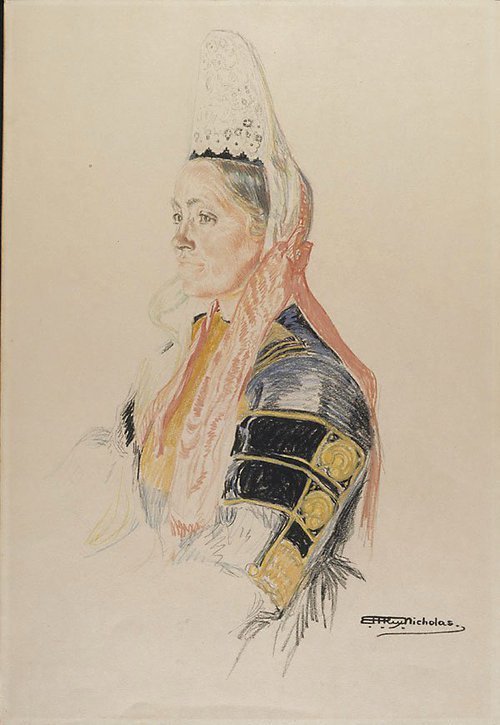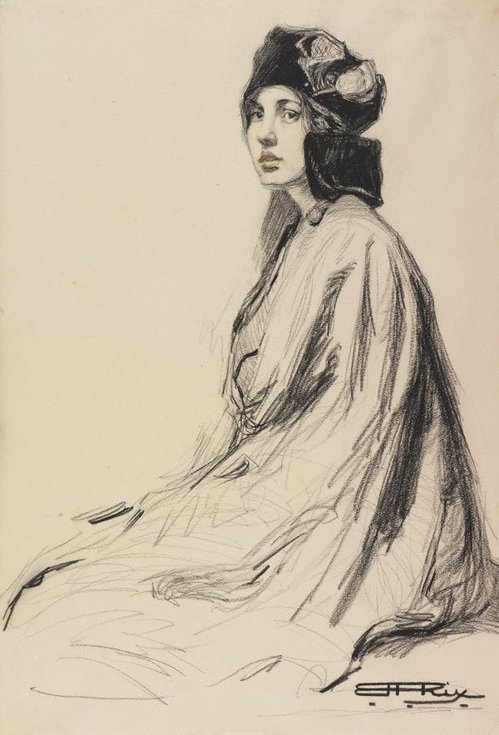Hilda Rix Nicholas
Australia
Born: Ballarat, Victoria, Australia 01 Sep 1884
Died: New South Wales, Australia 03 Aug 1961
Biography
Hilda Rix Nicholas made a significant contribution to Australian art in the period between the First and Second World Wars with her nationalist landscapes and spirited portraits of soldiers. In France she also achieved a remarkable level of success and recognition for an Australian artist, particularly for her orientalist and pastoral subject paintings and drawings.
She was born Hilda Rix in Ballarat, Victoria, in 1884. Her father Henry Finch Rix was a prominent teacher and poet; her mother Elizabeth Sutton was a musician and artist who had attended the National Gallery of Victoria School alongside Arthur Streeton, Fredrick McCubbin, Rupert Bunny and Emmanuel Phillips Fox. Rix Nicholas also attended the school and was taught drawing by McCubbin.
Early in her career she exhibited illustrations with the Victorian Artists Society and The Austral Salon (a significant women’s arts society at the time). After graduating in 1907 she left for Europe with her recently widowed mother and sister, enrolling in several ateliers. From 1910, she spent three summers in the artists’ colony of Étaples where she drew and painted rural subjects such as Fruit market, Etaples I 1910 and Grande mere 1914. In 1911 and 1914, she had works exhibited in the ‘New’ Salon in Paris.
In 1912 Rix Nicholas accompanied American artist Henry Ossawa Tanner to Spain and Morocco for three months. Basing herself in Tangier, she worked outdoors in the Petit Socco recording the crowds and architecture of the marketplace in paintings and drawings. These works formed the basis of her first solo show in Paris the same year, from which the French Government purchased a work for the Musée du Luxembourg.
In 1914 Rix Nicholas returned to Morocco with her sister, who likely modelled for her in Portrait c1912. Another work produced during this trip is African slave woman 1914, which demonstrates her gift for sensitively capturing a sitter’s character through lively draftsmanship and colour.
It is often remarked that Rix Nicholas’s absorption of post-impressionism was abetted by the light and colour of North Africa. Working quickly from life also encouraged her to simplify her forms and concentrate on the overall design of her compositions. The works from this period, which include landscapes, count among the earliest post-impressionist works by an Australian artist.
The outbreak of World War I prompted Rix Nicholas and her family to return to England in 1914. The following four years were personally tumultuous: her mother and sister died and her husband (George Matson Nicholas) was killed in action shortly after they were married in 1916.
Returning to Australia in 1918, Rix Nicholas made an immediate impression within the art community when she exhibited her French and Moroccan works in Sydney and Melbourne. Artist Grace Cossington Smith admired the post-impressionistic qualities of her work but conservative critics were dismayed by the modern and ‘masculine’ aspects of the exhibition.
Following a series of soldiers’ portraits and an unsuccessful tender for a war memorial mural at the Melbourne Public Library, Rix Nicholas refocused her patriotism into a series of regional landscapes and portraits. In 1922 she decided to travel around New South Wales with her friend Dorothy Richmond and ‘paint things typical of my country’. She famously designated herself as ‘the man for the job’. The works completed during this time – including the bucolic Through the gum trees, Toongabbie c1920 – reflect the revival of the pastoral tradition in art during the 1920s. This developed in response to Australia’s evolving national identity and the idea of the light-infused landscape as an antidote to the experience of war. An exceptional feature of some of these landscape works is their depiction of women participating actively in rural life.
Between 1924 and 1926 Rix Nicholas returned to Europe, where she exhibited her pastoral scenes that promoted the idea of Australia as a post-war Arcadia. She held a well-received exhibition in Paris, from which a second work was purchased for the Musée du Luxembourg. Her works also toured England, making an impression on English viewers who had never seen Australian landscape and people painted in such a manner.
Rix Nicholas returned to Australia an international success story, having been made an associate of the Societe Nationale de Beaux Arts in France in 1926. She resumed painting landscapes, which were met with mixed reviews in Australia; her work was criticised as ‘pseudo masculine’ in Home magazine. In 1928 she remarried and moved to Knockalong Cottage in the Monaro district of New South Wales. Her only child appears in some of her paintings from the 1930s, which conflate family values with nationalism.
Distance from the capital cities, along with gender barriers in the art world and the challenge of balancing roles of wife, mother and artist, made it difficult for Rix Nicholas to resume a career in Australia. Neither conservative nor modernist in an avant-garde sense, she fell out of favour with the contemporary art scene in the 1930s and 40s. Her eyesight also began to deteriorate and she last exhibited in 1947. She died in 1961 at the age of 77.
More recently, the brilliance of Rix Nicholas’s work, and her remarkable achievements overseas and at home in paving the way for Australian female painters, have been rightfully acknowledged.







